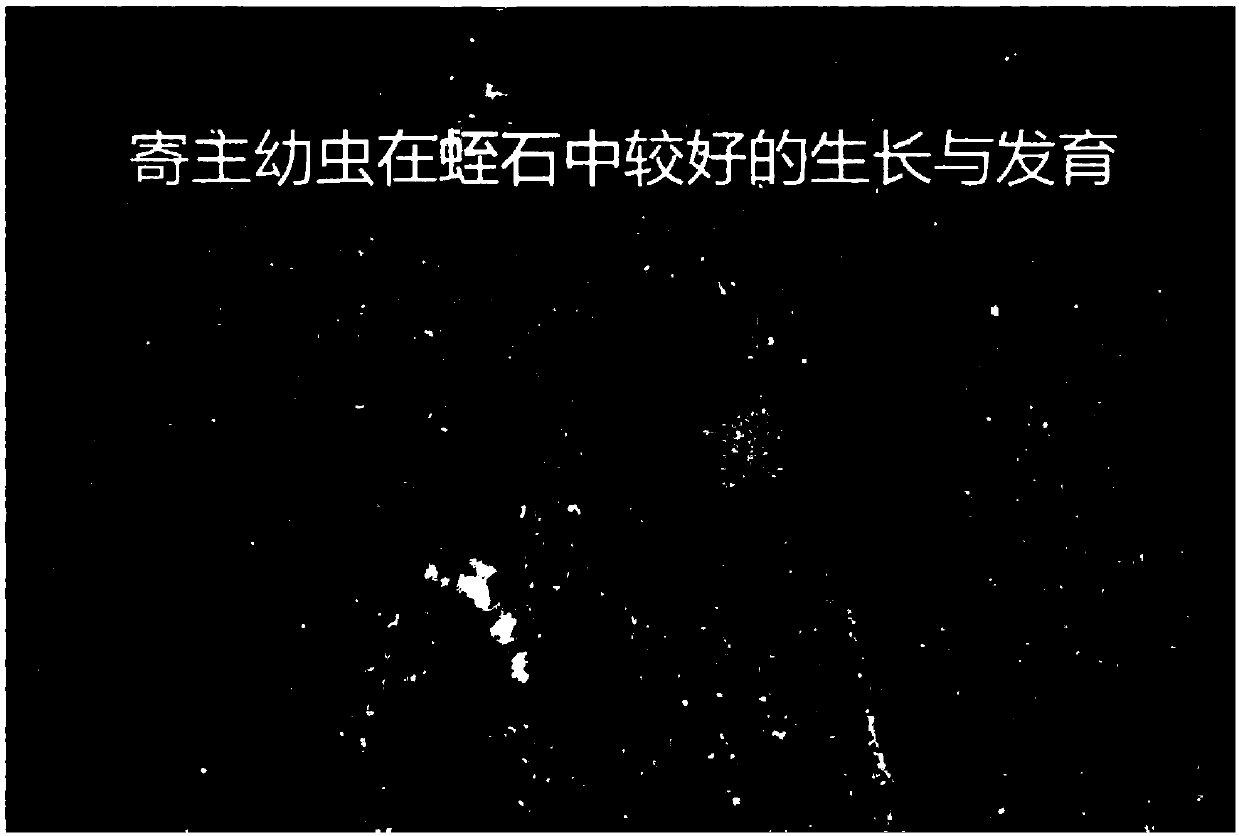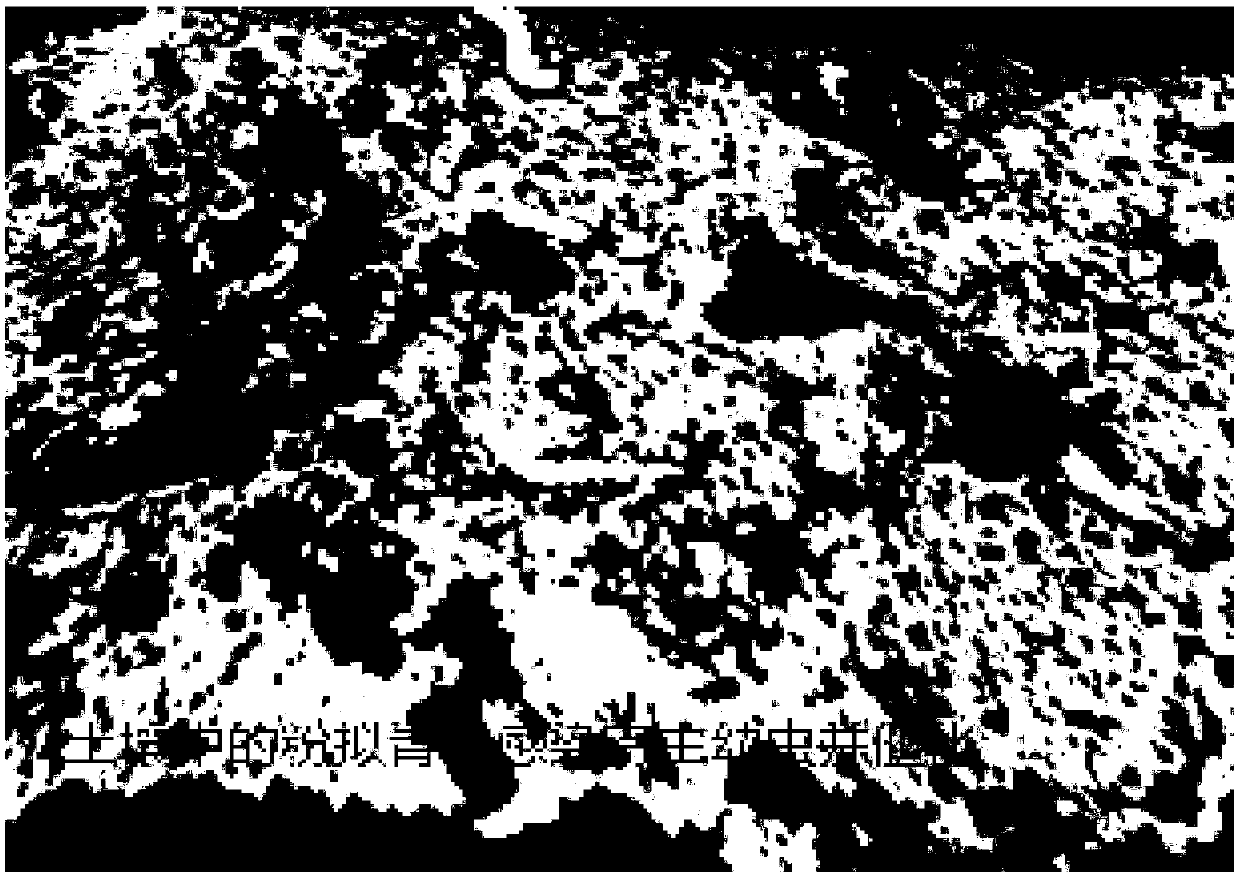Method for artificially raising larvae of hepialus armoricanus oberthur
A technology for the host of Cordyceps sinensis and bat moths, which is applied in the biological field, can solve the problems of low survival rate and high incidence of bat moth larvae of the host of Cordyceps sinensis, and achieves the effects of improving the feeding efficiency and avoiding the occurrence of diseases.
- Summary
- Abstract
- Description
- Claims
- Application Information
AI Technical Summary
Problems solved by technology
Method used
Image
Examples
Embodiment 1
[0034] Embodiment 1 uses vermiculite as the method for raising the bat moth larvae artificially
[0035] Collect the eggs laid by adult bat moths after mating, sterilize with 0.1% sodium dichloroisocyanurate for 1 minute, and then place them in a petri dish with wet filter paper (no clear water on the filter paper), and carry out moisturizing maintenance in an environment of 15-16°C . The egg stage is about 35 days at 15°C. One week before hatching, eggs were put into an insect rearing box filled with a rearing substrate to raise, and the selected insect rearing box was 300mm×400mm×160mm. The thickness of the vermiculite as the insect culture substrate in the box is 2 cm, and the water content of the vermiculite is 100% (that is, 1000 grams of vermiculite is mixed with 1000 mL of 0.2% sodium dichloroisocyanurate solution). Put feed carrots on the vermiculite, and put 5-6 carrots in the insect rearing box. If you put 5 carrots, put 4 strips of filter paper with a width of abo...
Embodiment 2
[0038] The only difference from Example 1 is that carrots are replaced by Polygonum viburnum as the natural feed for bat moth larvae. The results showed that using carrots as feedstuffs grew faster than using natural feedstuff Polygonum villiformis, and the individual weight.
experiment example 1
[0039] Experimental example 1 Identification of Cordyceps sinensis host bat moth
[0040] In Example 1, the larvae of the host bat moth with vermiculite as the substrate were bred until the middle and late December, and the larvae began to pupate. After more than 30 days, they emerged from the pupal stage, and the pupae and adults were taken for species identification. The instrument used was: PCR instrument S1000TM The malCycler; using Sanger sequencing 3730×I sequencer; using MEGA 7.0, IQ-tree, NCBI, BOLD SYSTEMS analysis.
[0041] According to the comparison results of the NCBI and BOLD SYSTEMS databases, the identification of the mitochondrial COI gene sequence and the mitochondrial Cytb gene sequence showed that the similarity between the adult sample and the Hepialus xiaojinensis Tu, Ma et Z hang 2009 was 99%, and it could be identified as the Hepialus xiaojinensis Tu. Moth Hepialus xiaojinensis. According to the comparison results of the NCBI and BOLDSYSTEMS databases,...
PUM
| Property | Measurement | Unit |
|---|---|---|
| Particle size | aaaaa | aaaaa |
Abstract
Description
Claims
Application Information
 Login to View More
Login to View More - R&D
- Intellectual Property
- Life Sciences
- Materials
- Tech Scout
- Unparalleled Data Quality
- Higher Quality Content
- 60% Fewer Hallucinations
Browse by: Latest US Patents, China's latest patents, Technical Efficacy Thesaurus, Application Domain, Technology Topic, Popular Technical Reports.
© 2025 PatSnap. All rights reserved.Legal|Privacy policy|Modern Slavery Act Transparency Statement|Sitemap|About US| Contact US: help@patsnap.com



